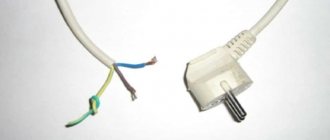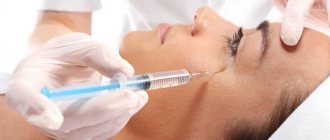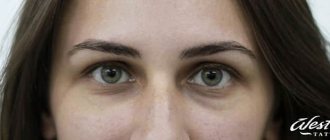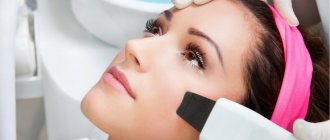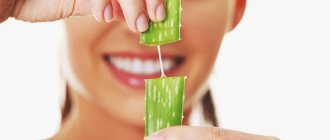Classification of burns
The severity of the injury is determined by the depth of damage to the skin. To provide effective assistance, it is necessary to correctly classify the burn:
- I degree. Slight redness of the skin area, swelling, mild pain. The consequences disappear without a trace after 3–7 days.
- II degree. Severe pain associated with the appearance of watery blisters. The deep layers of the skin are not damaged, which eliminates the formation of scars. Characterized by a change in skin color that occurs over time.
- III degree. The symptoms are many times greater than those listed above. Tissue death occurs and scabs and open wounds appear. The skin recovers poorly, forming dense scars.
- IV degree - charring. It is considered the most difficult to cure. In most cases, skin grafting is required. The injury affects the tissues of the muscles, tendons and bones.
In domestic conditions, first and second degree burns more often occur, but it is important to note that incorrectly provided or untimely assistance can lead to infection of the damaged area and serious consequences even with a second degree burn. If you are injured, it is important to see a doctor as soon as possible.
So, let's try to figure it out - is there an allergy to alcohol?
Internal ethyl alcohol is a compound necessary for metabolism and energy, which regulates the permeability of cell membranes and helps the body adapt to stressful situations. So can you be allergic to internal alcohol? In fact, no, because it is the “brainchild” of the organism itself.
More often, allergies occur from alcohol taken orally. Theoretically, such reactions of the body are possible to all types of alcoholic products.
It is difficult to say when the first alcoholic drink appeared, perhaps at the same time as the first dishes. Our distant ancestors created the first varieties of wine and beer from grapes, honey and fruits.
Pure alcohol was obtained by alchemists in the Middle Ages and was called “alcohol,” which means “intoxicating” in Arabic. Did you already have an allergy after drinking alcohol? History is silent about this, but modern alcoholic drinks quite often become the cause of allergies.
There are allergies to preservatives, dyes, hops, tannins, malt, flavorings, yeast, wort and other substances that are used in the production of alcoholic beverages. The most “allergenic drinks” are considered to be cognac, beer, liqueur, wine and vermouth.
It is safe to say that the cheaper the alcohol purchased, the higher the risk of an allergic reaction due to the large number of dangerous additives.
Substances used to protect plants from parasites and fertilizers for a better harvest, if they get into plants, can cause an allergy to alcohol.
Allergens from fruits and berries from which the alcoholic drink is made also cause symptoms in people with food allergies.
Attention!
The rapid removal of ethanol breakdown products from the body with the help of Enterosgel sorbent will help avoid allergies from alcohol and alcohol poisoning.
Many organic (and inorganic) substances can enter alcoholic beverages during the technological process. It is from them that signs of skin allergies and digestive disorders appear.
By the way…
Ethanol is a good solvent for various substances that, when entering the body, begin to manifest their “allergic essence”. In other words, ethanol increases allergies. Moreover, alcohol can be very dangerous if you have allergies!
Ethyl alcohol also accelerates the absorption of allergens that enter the body with various products. It has been established that ethanol contributes to the occurrence of nutritional allergies in 12% of patients. A red face, rashes on the legs, torso and arms after drinking alcohol are quite common manifestations among allergy sufferers.
In addition to alcoholic beverages, ethyl alcohol is included in various medicines, hygiene and cosmetic products - because of this, allergic reactions often occur to them.
Alcohol and pregnancy
Drinking alcoholic beverages by a pregnant woman in the future provokes allergic diseases in children - asthma, dermatitis, rhinitis, and so on.
First aid for thermal burns
The basic rule of providing care for burns before being examined by a doctor is to do no harm! What to do:
- Don't panic!
- Provide the victim with a safe place, removing the cause of the injury.
- If the burn is caused by hot liquid, it is important to remove hot, wet clothing as soon as possible. If the fabric is stuck to the skin, carefully cut it with scissors; do not remove the stuck fragments yourself.
- Reduce the temperature of damaged tissues. Immediately after receiving a first or second degree burn, the injured area must be cooled with running water; in more serious cases, a cool bath or a damp sterile bandage can be used.
- If the pain is severe, take a painkiller.
Types of allergies to alcohol
Hereditary predisposition plays a major role in the likelihood of any allergic reaction. A person whose parents have allergic diseases also becomes allergic in 80% of cases. This reaction of the body is called innate. By the way, intolerance to alcohol, as well as congenital allergy to alcoholic drinks, is more common among residents of Asian countries. Additionally, alcohol allergies are common in people with lactose intolerance.
A person “earns” an acquired allergy throughout his life as a result of exposure to external allergens (food, pollen, household dust, alcohol, etc.)
How to get rid of an allergy to alcohol?
The first step is to determine which alcoholic drink causes the allergy. Knowing the allergen, you can decide which drinks you can drink if you have allergies and which you cannot.
If a rash and redness appear on the face after drinking alcohol (whiskey, cognac), it means that the patient has an allergic reaction to tannins or fusel oils.
If the allergy appears after drinking beer, there is probably an intolerance to brewer's yeast or malt. Often such people have food allergies and drug allergies to penicillin.
What, even for beer?
Scientists say: approximately 1% of the world's population is allergic to beer, which is associated with the body's reaction to one of the proteins in barley.
During the fermentation process in wine and beer, histamine is formed - a substance that triggers allergic reactions in the body for all types of allergies, from pollen to contact allergies. Red wine contains even more histamine. Yes Yes! Unfortunately, wine contains not only the truth, but also a whole “bouquet” of allergens. Some of them are contained in raw materials, others end up in the drink during factory production.
Information for wine lovers
Allergic reactions to red wine are more common in people suffering from bronchial asthma and allergic rhinitis.
An allergy to grapes can cause anaphylaxis to grape wine. It has been scientifically proven that allergies to grape wine occur in people with latex allergies and allergies to grape pollen.
To clarify wine, substances with a high allergenic index are used - egg white, gelatin, milk casein and others, which pose a great danger to people with food allergies.
Proteins from insect venom and fungi that live on grape bunches can also become allergens. These substances enter the wine during pressing of grapes.
Sulfur dioxide, sulfites or other components of wine can cause an allergic reaction.
By the way, about sulfites: these substances are one of the main “provocateurs” of allergies to alcoholic beverages. It is known that high concentrations of sulfites are found in wine, beer and cider and can provoke an attack of bronchial asthma, Quincke's edema, and urticaria. In addition, they can be found in dried fruits, shrimp and almost all cosmetics.
Allergies to vermouth often occur in people suffering from hay fever, for example, with an allergy to wormwood or sunflower.
Almond liqueur and mulled wine are dangerous alcohol if you are allergic to almonds. With pollen and food allergies to barley, an allergy to beer may occur.
Champagne lovers may also experience an allergic reaction. The fact is that this sparkling drink, beloved by many, contains strong allergens: mold and yeast, as well as various additives: flavor enhancers, sweeteners, etc.
Whatever they mix!
A large number of additives are added to cheap alcohol: dyes, essences, thickeners - these are the ones that often cause allergies in adults and adolescents.
Oddly enough, it is even possible to have an allergy when drinking vodka, especially if it contains flavorings or dyes. Maybe you can “deal” with artisanal alcohol? Chacha, moonshine and mash can also hardly be called safe, so it’s better not to risk your health!
“But this is all here, but in Europe...”
According to European scientists, in 15% of cases it is alcohol that causes anaphylaxis, and most of the toxic effects of ethyl alcohol are associated with alcohol abuse.
What is prohibited to do
When providing first aid, many make mistakes that aggravate the victim’s well-being:
- lubricate burns with vegetable oil;
- touch the wound with dirty hands;
- puncture blisters on the skin;
- apply sour cream to injured tissues;
- apply ice;
- treat the skin with an antibiotic;
- apply a tight bandage.
Do not try to neutralize alcohol with other chemicals. It is enough to rinse the wound with clean water. If it is deep, bleeding or very painful, you need to call a doctor.
Possible complications
Chemical damage is fraught with bacterial complications. Rubbing alcohol destroys the protective layer of the epidermis, leaving the skin vulnerable to infection. Possible complications of a burn injury include:
- abscesses;
- regional lymphadenitis;
- loss of vision;
- endophthalmitis;
- blepharitis;
- swelling of the pharyngeal mucosa;
- ulceration of the gastric mucosa;
- internal bleeding.
Accidental ingestion of alcohol is dangerous due to difficulty breathing and burn shock. The greatest danger is a 3rd degree burn of the esophagus. The mortality rate of patients in this group is 60%.
Traditional methods for eliminating burns with alcohol
Redness on the skin from alcohol burns is quickly eliminated with the help of traditional medicine. The following measures help with burns:
- Grate the onion on a fine grater. Moisten a piece of gauze with the resulting mass and apply to the sore spot. This measure helps prevent blisters.
- Raw grated potatoes relieve redness and relieve pain. Apply to damaged skin several times daily.
- Aloe vera juice supports the process of tissue regeneration. You can also use plant leaves. They are cut and placed on the wound with the chewing side.
- Peppermint solution eliminates irritation. Mint is brewed in hot water. The cooled liquid is applied in the form of lotions to damaged skin.
- Calendula decoction. This remedy is used for burns three times a day. With the help of calendula decoction, the skin is quickly restored.
Calendula decoction is one of the folk methods for treating alcohol burns.
It is also good to use grated carrots or honey to treat burns. To relieve symptoms, burn the burns with beaten egg.
Self-medication with traditional methods for burns of the esophagus or mucous membrane of the eyes should not be carried out. Such injuries require medical therapy, and alternative medicine can be used during the recovery period and only with the approval of the treating physician.
Symptoms
Reference! A chemical burn of the mucous tissue of the eye is difficult to confuse with anything else. The first symptom is severe discomfort, pain, and in some cases, painful shock.
The degree of destructive effect of an alcohol-containing substance depends on its quantity, concentration and duration of stay on the surface of the eyeball.
The following clinical picture is typical for an alcohol burn of the eye:
- sharp, cutting pain;
- redness of the white of the eyeball, protruded capillaries;
- swelling of the eyelids, swelling;
- photophobia, tearfulness when changing lighting;
- decreased visual acuity, myopia;
- high intraocular pressure;
- white veil over the eye.
Alternative sanitizers
If the skin of your hands reacts sensitively after an antiseptic, you can choose a composition with chlorhexidine. The following components will additionally take care of your hand skin:
- D-panthenol – softens, moisturizes the dermis, enhances the regeneration of damaged tissues. Heals wounds and eliminates discomfort.
- Lavender essential oil has an additional antifungal effect.
- Levomenthol is a natural antiseptic with a cooling effect. By itself, it is weak to fight viruses, but as part of auxiliary components it enhances the effect of sanitizers.
- Aloe extract actively moisturizes, enhances the production of collagen and hyaluronic acid. The skin restores its own hydration mechanisms.
Both alcohol-based antiseptics and their analogues do not completely replace hand washing with soap. In case of acute skin reaction, you can choose soap with the listed ingredients to maintain the condition of your hands.
Why is an alcohol burn dangerous?
Ethanol is a chemically active substance that has a negative effect on the tissues of a living organism. It is a good solvent for organic compounds:
- proteins;
- amino acids;
- fats;
- carbohydrates.
A burn with alcohol in 82% of cases does not cause serious damage, but only when the substance gets on the skin. When ethanol comes into contact with mucous membranes, more severe injuries occur. Undiluted rubbing alcohol irritates the ciliated epithelium that lines the inner surface of the esophagus. If treatment is delayed, it causes poisoning, as well as 3A and 3B degree burns.
Therapeutic measures
Treatment of chemical burns is carried out with various medicinal, analgesic, anti-inflammatory and analgesic drugs. Therapeutic actions depend on the localization of the extent and location of the lesion.
For skin burns
Alcohol damage to the skin when treated with anti-burn ointments disappears within a few days. For minor injuries, tissue can recover without special treatment.
Treatment of burns with alcohol on the skin is aimed at eliminating symptoms. Special preparations are applied to the affected area three times a day. The following ointments help to cope well with painful sensations and also relieve redness on the skin:
- Levomekol;
- Bepanten;
- Panthenol;
- Solcoseryl.
For skin burns with alcohol, use Levomekol.
After the healing process is complete, anti-scarring and dark spot removal agents are sometimes used. Treatment of skin burns is mainly carried out at home.
For burns of the larynx and esophagus
Alcohol damage to the tissues of the digestive organ requires more comprehensive treatment. Therefore, all therapeutic measures are carried out only in a hospital setting.
The treatment process for a burn of the esophagus consists of the following stages:
- complete gastric lavage;
- gastroscopic examination of internal organs;
- taking antishock drugs - Prednisolone;
- the use of sedatives and drugs to relieve spasms - “Atropine” and “Relanium”.
Antibacterial treatment is also carried out for preventive purposes to avoid complications. The patient is prescribed drip nutrition. Eating occurs gradually as the tissues of the internal organs heal. In the first days, the consumption of liquid products is allowed.
For burns to the mucous membrane of the eyes
If alcohol gets into your eyes, it is very important to quickly rinse and treat the mucous membrane. Prolonged exposure to a concentrated alcohol solution on the organs of vision can lead to complex injuries and cause blindness.
To treat burns of the mucous membrane of the eyes, the following drugs are used:
- Antiseptic drops or ointments;
- painkillers;
- antibacterial agents;
- restorative and medicinal drops or ointments - Taufon or Actovegin.
Taufon is often used to treat alcohol burns of the mucous membrane of the eyes.
Treatment of eye injuries is carried out only under the supervision of a doctor. Treatment methods depend on the degree of damage to the mucous membrane of the eye and the individual characteristics of the patient’s body. After completing the treatment process, it is recommended to wear special lenses.
Precautionary measures
Preventing burns involves following safety precautions when working with chemicals. To avoid burns, you should:
- use the drug only externally;
- dilute alcohol with water when using it as an antiseptic;
- Store ethanol in glass containers out of the reach of children.
When using an alcohol compress, you should always dilute ethanol with boiled water. If you take undiluted alcohol orally, you need to rinse your stomach and call a doctor at home.
